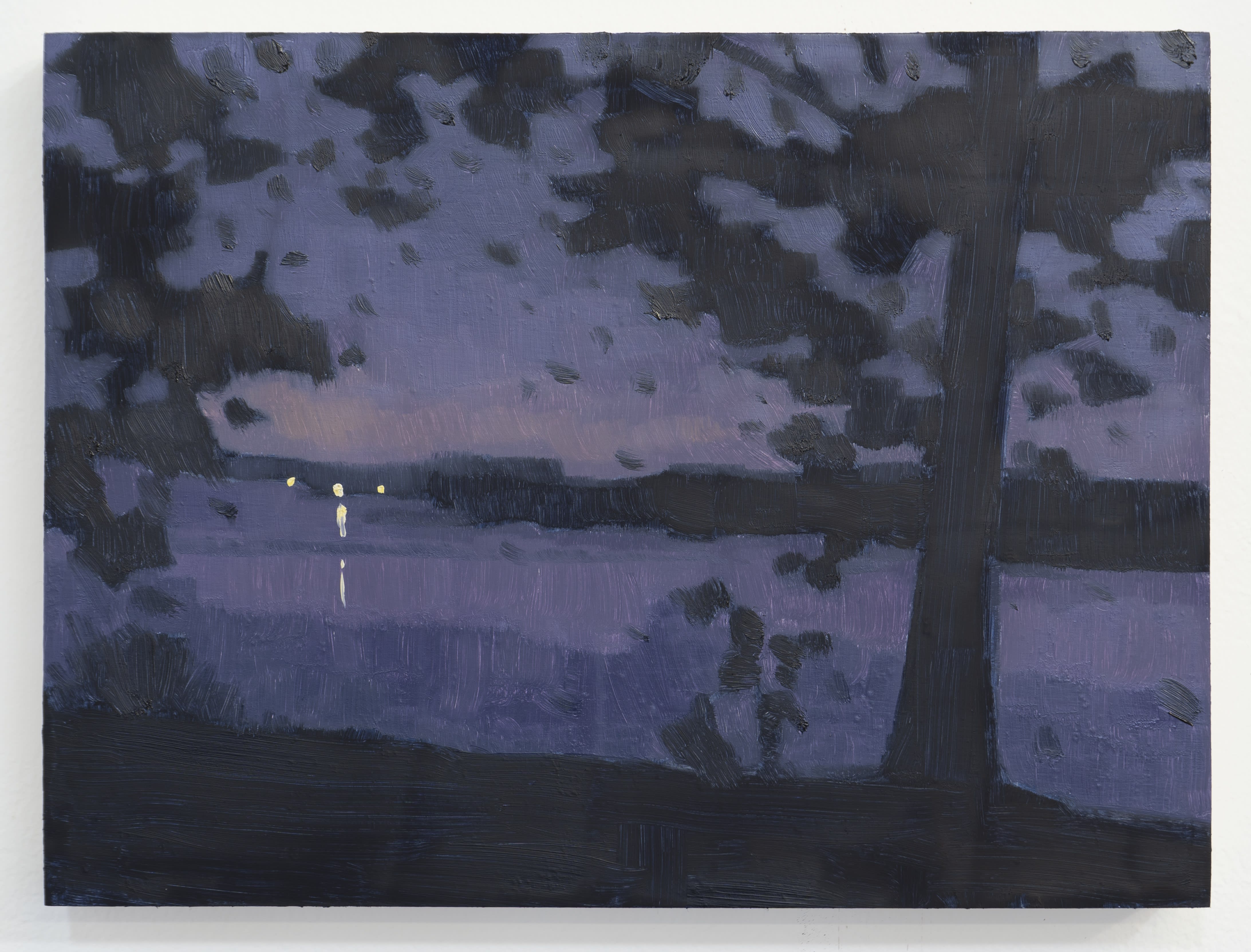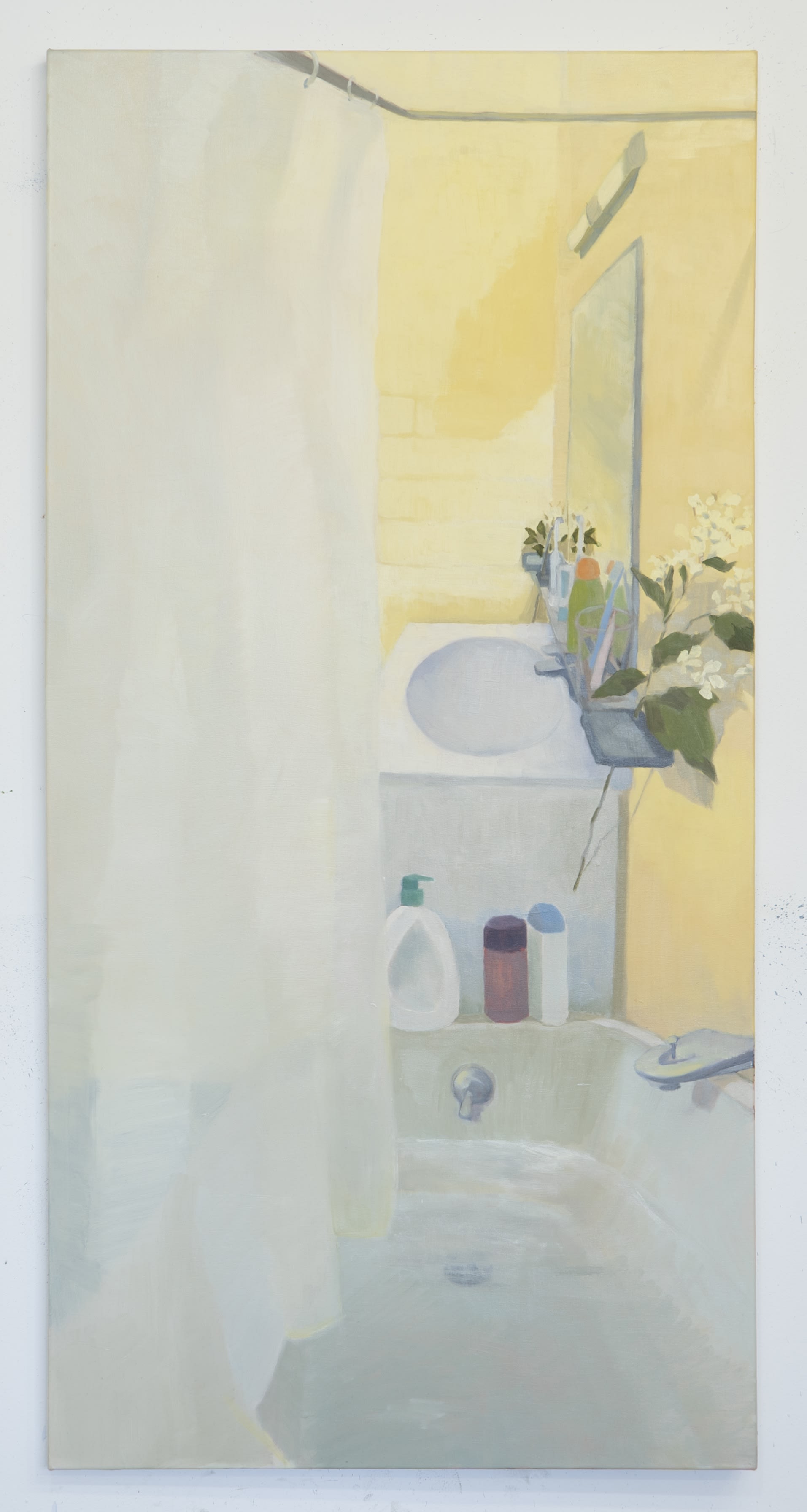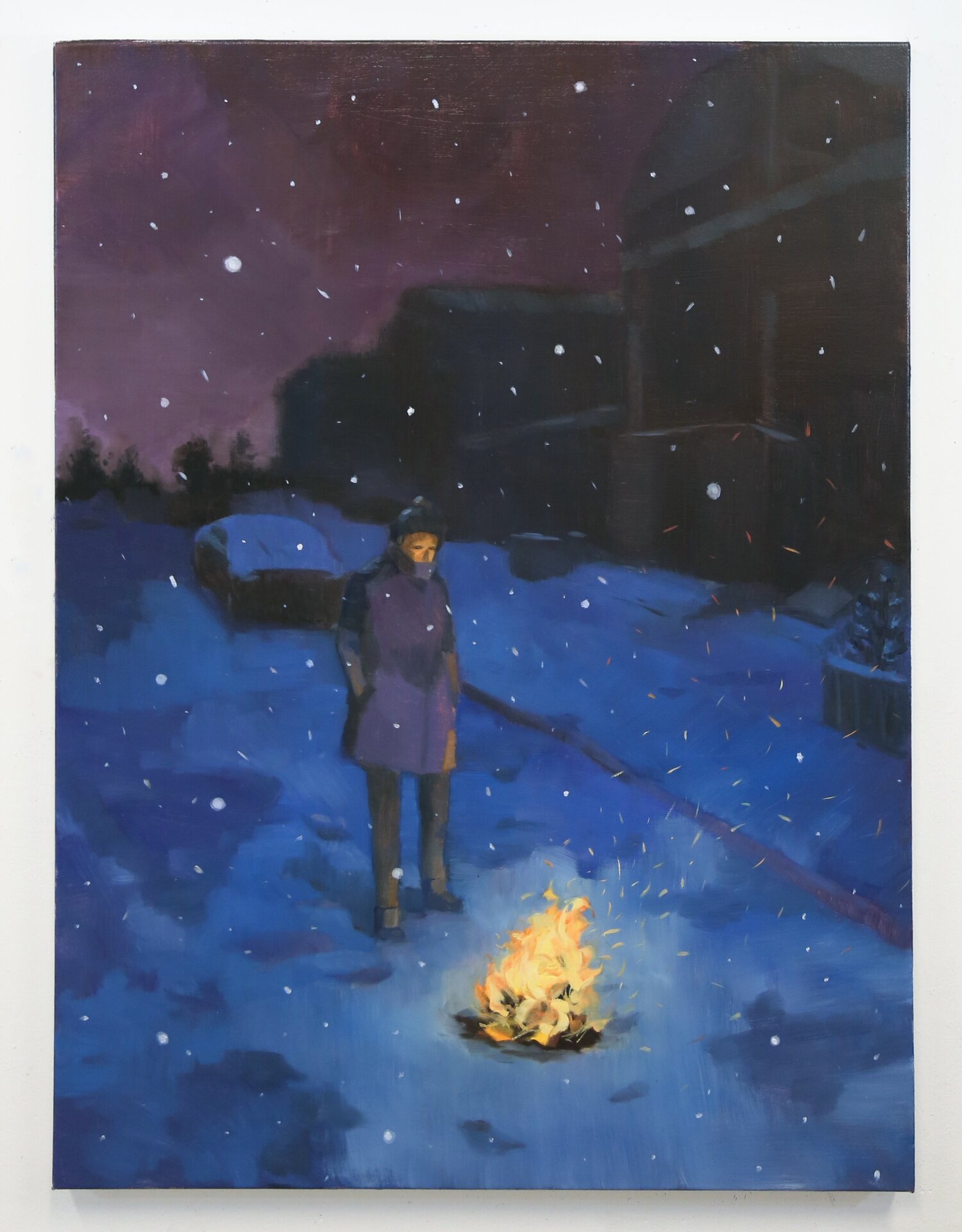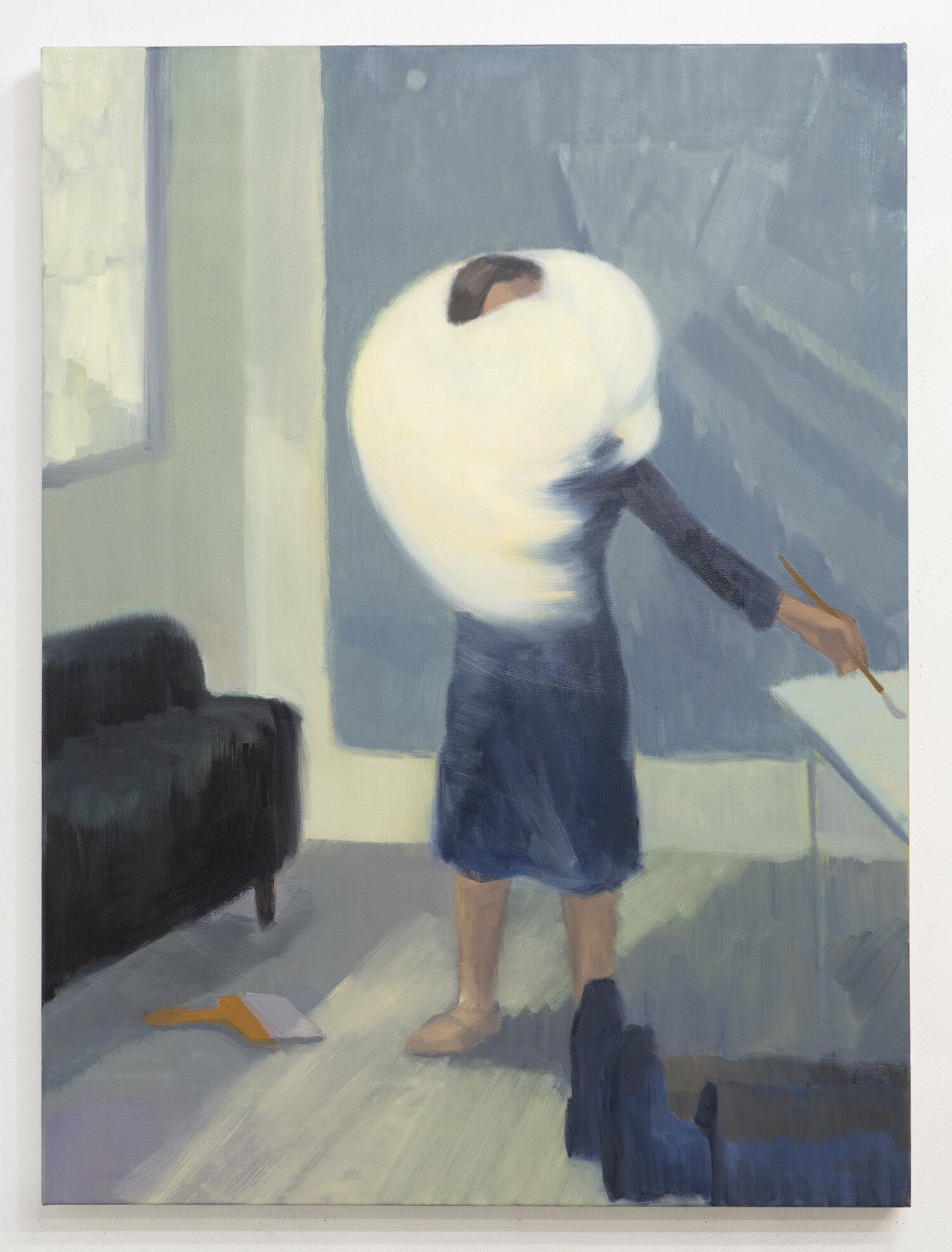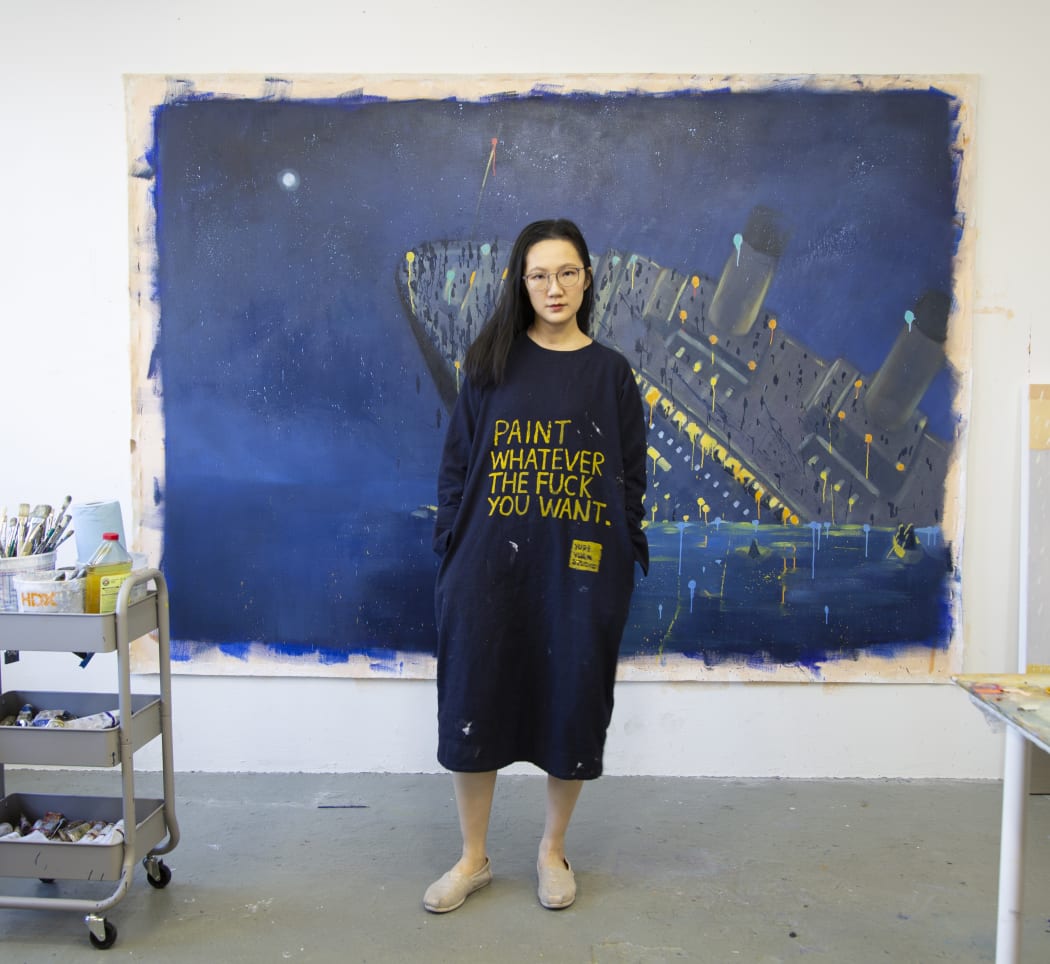
|
We are pleased to share with you a conversation between Chela Simón-Trench and artist Yuri Yuan about her practices. The interview is published on the occasion of her solo project, Moments of Being, at Make Room’s online viewing room.
CHELA S-T: Can you give me a quick breakdown of how you grew up? How did you become an artist?
YURI YUAN: So I was born in Harbin, China. It’s a city in the northern part of China that is famous for its Russian cultural influence. Because we are really close to the border, there used to be a lot of Russian immigrants. Our food and architecture were very influenced by Russian culture.
When I was a child, I moved to Singapore and spent most of my teenage years there. Then, I moved to Chicago for my undergrad at Art Institute of Chicago, and I came to Columbia University in New York for my grad school.
I always wanted to be an artist. When I was in Kindergarten, I always got a lot of compliments for my drawings. My grandfather would always bring me outside to draw in nature. Because my mother traveled to Russia often, our house was always full of art catalogues. She arranged tour groups to go to Russia and sometimes she would go on business trips, always bringing back catalogues from the Hermitage Museum. So, I grew up with a lot of influence of Western oil painting, and I think that’s when it all started.
CST: I definitely see a lot of Pre-Impressionist, Impressionist influence in your work, and I love that. I remember going to the Musee D'Orsay in Paris and looking at all the Impressionist art and thinking, why doesn't anyone make stuff like this anymore? And then I saw your work and felt that it had that same Impressionist feeling.
YY: I love those artists. I paint outside as well. Not as my main practice, but to inform my main practice. My practice of plein air painting is very impressionist-inspired. And my use of color as well. For example, Impressionist artists do not use black from a paint tube. They mix their own black because in nature, there is no pure black. There’s always light. When I make black, I’ll mix a dark brown and a dark blue or a dark purple and dark green.
Yuri Yuan, Susanna’s Backyard, 2021, 9x12 in, Oil on Board
CST: How has your multi-cultural experience affected or inspired your practice, both positively and negatively?
YY: Growing up in different cultures I learned from very different perspectives. For example, colonialism and racism mean very different things in Asia. For me, I would like to think that I have a very zoomed-out perspective. I am not looking at localized issues. I think about how narratives are constructed, in media or in our communication. I would say a lot of my paintings have a slower read. They are not about giving an answer to something; they are about posing questions. They are about challenging you about visibility, challenging you about what can be seen and what cannot be seen, what is here and what is not here. A lot of times I think what is not said in my paintings is more important than what is said.
Yuri Yuan, Jasmine, 2019, 36x72 in, Oil on Canvas
CST: Do you ever feel pressured to create a certain type of narrative based on the way you grew up?
YY: I do. When you are an Asian artist, people ask, “where is the Asian part of you in this painting?” As though I have to include some kind of obvious symbol. I think everything is a part of me. Asian culture is a part of me, and I don’t have to spell it out in my painting. I do feel the pressure, but that is something I definitely won’t give into. I have a slogan in my studio that says “paint whatever the fuck you want” to remind myself.
CST: Why did you stick to the medium of painting? What are the emotions you feel while you paint? Why is painting special to you?
YY: I just love the medium. I’ve been painting and drawing since I was very young. It feels even more natural than my native language. Even though my native language is Chinese, I haven’t spoken proper Chinese in many years. I only speak Chinese to my mom, so painting is more natural to me, more free. I like painting not just as an expression of ideas, but as an action. Mixing paints, squeezing out paints, putting them onto a canvas. I like it when I mix pigments and I know the color umber is going to dry faster than the blue, and the blue is going to dry faster than the yellow because of the different elements in them. It feels very much like alchemy. I feel a kind of satisfaction that I am unable to get anywhere else. I did try a little bit of screen printing, sculpture, and the other stuff you have to explore in an interdisciplinary art school, but it was a struggle. My brain is such a painter’s brain that it is hard for me to do anything else.
CST: What is your ritual before you start a painting? And when you are finally done?
YY: Before I start painting, I need to make my coffee. My daily routine starts with me coming to my studio, making breakfast and coffee, and reading some books because there are just too many voices. Not just in my head, but because of the notifications from my phone. I just need some space. I think about a painting for a few days or weeks before I move onto the canvas. Even though sometimes I finish a painting within 2, 3 or 6 hours, I do think about it for a long time before I start. I plan out the composition, the colors, sometimes I will do some studies, quick sketches, but never a full plan in the more classical or academic way because I like the surprise when I move onto canvas. It doesn’t go as originally planned and that’s a good thing. If you already have a perfect image, what is the point of making it a painting?
When I’m done with a painting, I generally just leave it there in the studio and think about it later. When you first finish a painting, you have a lot of doubts. Most of the time, it grows on you a few days or weeks later when you hear other people talk about it. Sometimes I will edit a painting, but most of the time I won’t. Sometimes people don’t like my paintings and that’s totally fine! I have to make what I have to make.
CST: I see that this exhibition’s title was based on Virginia Woolf’s Moments of Being. What themes and ideas explored by Woolf connect to the work in this exhibit? In turn, what can you say with a brushstroke that Woolf could not say with words?
YY: The reason why I picked this title is because I really like Virginia Woolf’s book, Moments of Being. Specifically this one chapter called “The Sketch of the Past,” where the author explores her own narratives and memory. She looks back on these memories and she starts to analyze them. I really like her sensibility in finding meaning in mundane moments of life. It’s not about some grand moments, it's about the small moments in life. For me, it's those small moments that inspire my paintings. Like when I take a walk in the rain, when I see snow fall, when I see fire flakes go up. It's those very tiny moments, not a grand gesture, that I feel like my inner self is most comfortable, most free to express myself.
I think brushstrokes and words say very different things. In the chapter, Woolf actually imagined how she would portray the scene if she were a painter. And for me, I think the other way around sometimes: If I were a writer and I were constructing a narrative, what kind of character am I building and what kind of scene am I making? I think a lot of the arts, like film, literature, and fine arts, all share very similar language. You just need to find your own people who you draw inspiration from.
Yuri Yuan, Phantom, 2021, 36x48 in, Oil on canvas
CST: How has a global pandemic affected your work? How do you explore and communicate that?
YY: Personally, it was very difficult for me to be alone in New York, so far away from my family and in constant worry of dying from COVID. But, for my studio practice, I think it was actually beneficial because I had a lot more space for myself to be alone, to develop my work, to think about my work, and to paint what I feel most strongly about. During our regular schedule in grad school we have professors who come into our studios almost every day, and you hear a lot of voices. You can’t really think independently. And you feel that you have to listen to these voices because they’re so smart, they’re so much more advanced than you. So, I think the pandemic has really helped my practice because my practice has focused on me and my relationship with the world.
Death and grief was already a part of my practice before the pandemic. This sense of longing and loneliness has always been a part of it because me moving to different places, losing connections with people has always been a big part of my life. I think the pandemic just made me think about it on a more universal scale. When I thought about death and tragedy before, I was always thinking about me struggling and suffering. But with COVID, it has brought to the surface level that everyone is very scared of death. I am rethinking mortality as a common human experience, and when people look at my paintings, they don’t need to know exactly what happened to me, what I went through, but I hope they can sense the similar type of feeling and have the space to process their own difficult emotions.
CST: Your body of work touches on loss and solitude. What draws you to these emotions? How does creating an abstract depiction of these emotions change the feeling or the experience? Yuri Yuan, Time and Again, 2020, 36x48 in, Oil on Canvas
YY: I’ve always been interested in these emotions because of growing up in different places and never having a place where I truly belong. Sometimes people ask, where do you come from? And it’s really hard to say. Am I from Chicago? Am I from Singapore? Am I from China? This type of longing for a place is what I have been dealing with a lot.
In 2019, I had a near death experience where I was hospitalized in ICU for a month. So, that was the time that I was closest to death. Then, at the end of that year, my father passed away from a heart attack. A lot of that is still very fresh for me, and that’s why I make these paintings, to process those types of emotions. I think for me as a painter it's very important that I be honest, genuine, willing to be vulnerable, and show all that in my painting, even if it's not explicit. I do think that vulnerability is not something that is very common in painting these days.
As for the abstract depiction, that part is not from myself, but rather from art school. For example, I use compositions and colors to enhance a certain feeling. I have one painting called Hellscape that is just black and red fire, it looks like an inferno. If I wanted to, I could have painted the fire with yellow and orange to create a more natural-looking fire, but I decided to use only cadmium reds because that’s more like inferno fire, a metaphor for fire. Real fire does not look like that. In another painting called Doldrums, there is a tiny dog walking on the beach. I’m utilizing composition-- a very vast sea versus a very small dog. That type of symbolism and painting language is what I learned from art school.
Yuri Yuan, Doldrums, 2020, 30x40 in, Oil on canvas
CST: Your work seems to allow you to revisit moments in your life -- is there any moment or story associated with one of these works that wasn’t told on the exhibition page?
YY: I paint a lot from memory or inspired by memory. Sometimes I paint from my memory of dreams I had. I think memory really intensifies what you experience. You are only able to remember the really significant moments in your life. Each time you revisit these, you find something new within that memory. In each of these paintings, they have their own story. That story decides how that painting is going to look and how big or small the painting will be. For example, Doldrums, the one with the tiny dog next to the sea, is from a dream where I felt I was drowning in the sea and nobody could see or save me. There was a tiny dog that walked past the beach and saw me but was unable to save me because there was nobody around. For something like Snowman, it comes from a very small and daily thing. There was a snowstorm, and I went to the park and saw this snowman that hasmelted. There was only a scarf and a little hat left in the snow, suggesting what was once there. Maybe I am just a sad person, but I just find these types of melancholic moments of my life very interesting, so I decide to record them.
CST: How do these moments or inspirations change for you once you reproduce them in a painting?
YY: It gives me the time and space to relive and sometimes make up for a lost moment. Or, to eternalize a very transient moment like the snowman. The paintings also create a buffer zone between me and some of the most traumatic moments of my life. They give me that space to be removed from it because sometimes trauma just feels so raw. I need that space to be away from it and a way to confront it while feeling safe. I think painting provides me that space to confront those memories as well.
Yuri Yuan, Ego, 2021, 36x48in, Oil on Canvas |
|
